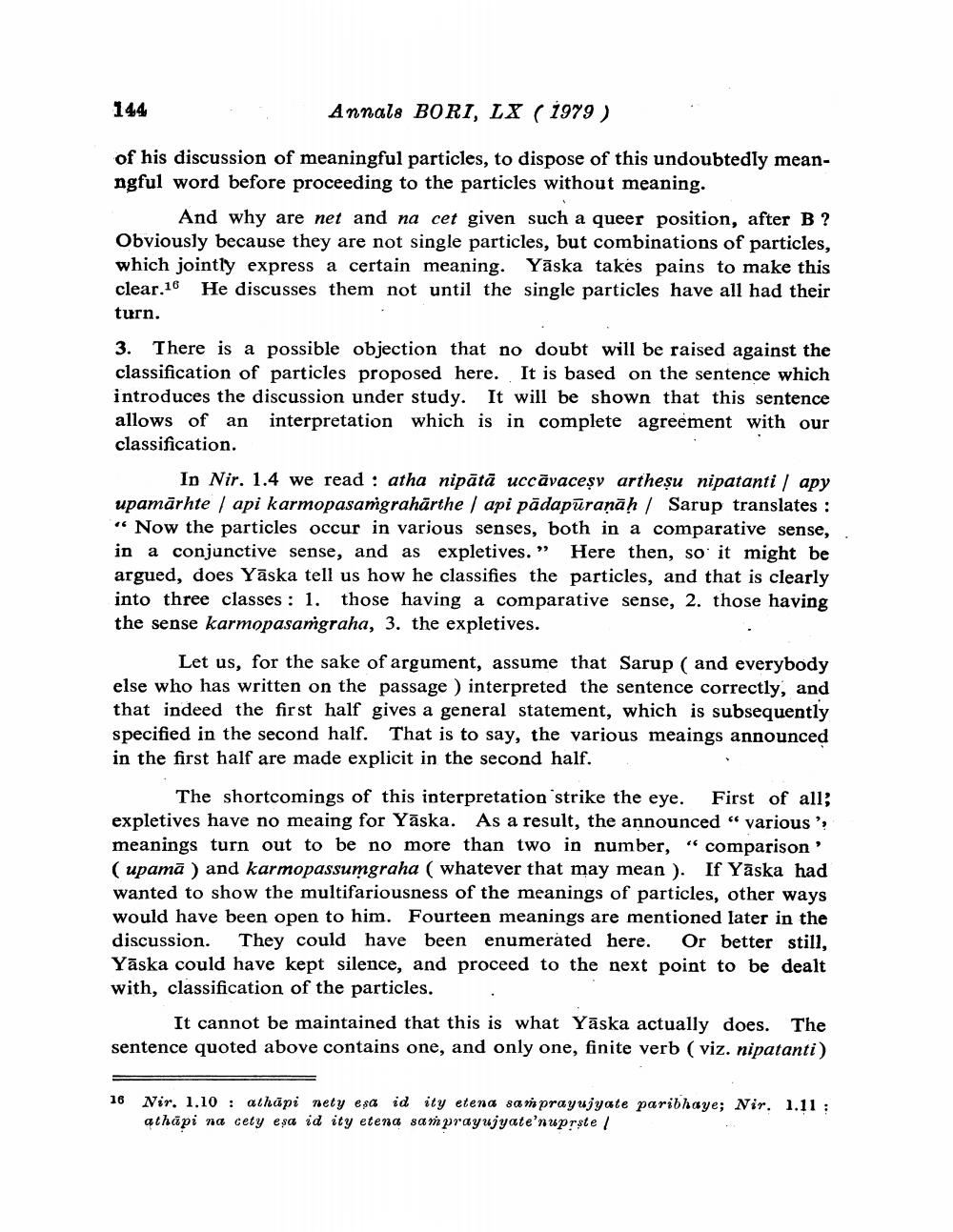Book Title: Yaskas Classification Of Nipatas Author(s): Johannes Bronkhorst Publisher: Johannes Bronkhorst View full book textPage 8
________________ 144 Annals BORI, LX (1979) of his discussion of meaningful particles, to dispose of this undoubtedly meanngful word before proceeding to the particles without meaning. And why are net and na cet given such a queer position, after B? Obviously because they are not single particles, but combinations of particles, which jointly express a certain meaning. Yāska takes pains to make this clear.16 He discusses them not until the single particles have all had their turn. 3. There is a possible objection that no doubt will be raised against the classification of particles proposed here. It is based on the sentence which introduces the discussion under study. It will be shown that this sentence allows of an interpretation which is in complete agreement with our classification. In Nir. 1.4 we read : atha nipātā uccāvaceșy artheșu nipatanti / apy upamārhte / api karmopasamgrahārthe / api pādapūraņāḥ / Sarup translates : “ Now the particles occur in various senses, both in a comparative sense, in a conjunctive sense, and as expletives.” Here then, so it might be argued, does Yāska tell us how he classifies the particles, and that is clearly into three classes : 1. those having a comparative sense, 2. those having the sense karmopasamgraha, 3. the expletives. Let us, for the sake of argument, assume that Sarup (and everybody else who has written on the passage ) interpreted the sentence correctly, and that indeed the first half gives a general statement, which is subsequently specified in the second half. That is to say, the various meaings announced in the first half are made explicit in the second half. The shortcomings of this interpretation strike the eye. First of all; expletives have no meaing for Yāska. As a result, the announced " various', meanings turn out to be no more than two in number, “ comparison (upamā ) and karmopassumgraha ( whatever that may mean ). If Yāska had wanted to show the multifariousness of the meanings of particles, other ways would have been open to him. Fourteen meanings are mentioned later in the discussion. They could have been enumerated here. Or better still, Yāska could have kept silence, and proceed to the next point to be dealt with, classification of the particles. . It cannot be maintained that this is what Yāska actually does. The sentence quoted above contains one, and only one, finite verb (viz. nipatanti) 16 Nir. 1.10 : athāpi nety esa id ity etena sa n prayujyate paribhaye; Nir. 1.11 : athapi na cety esa id ity etena samprayujyate'nuprste /Page Navigation
1 ... 6 7 8 9 10 11 12 13
